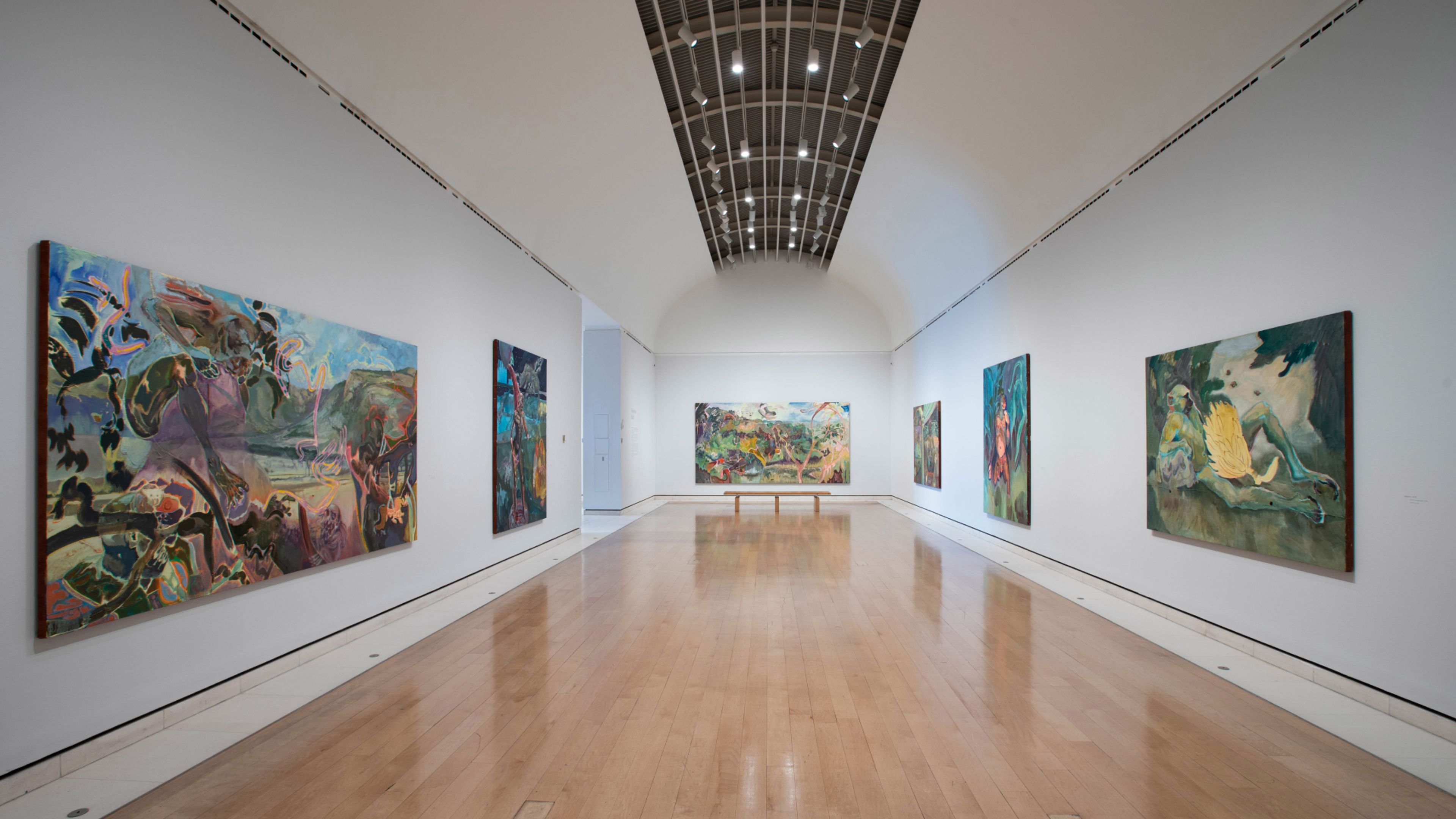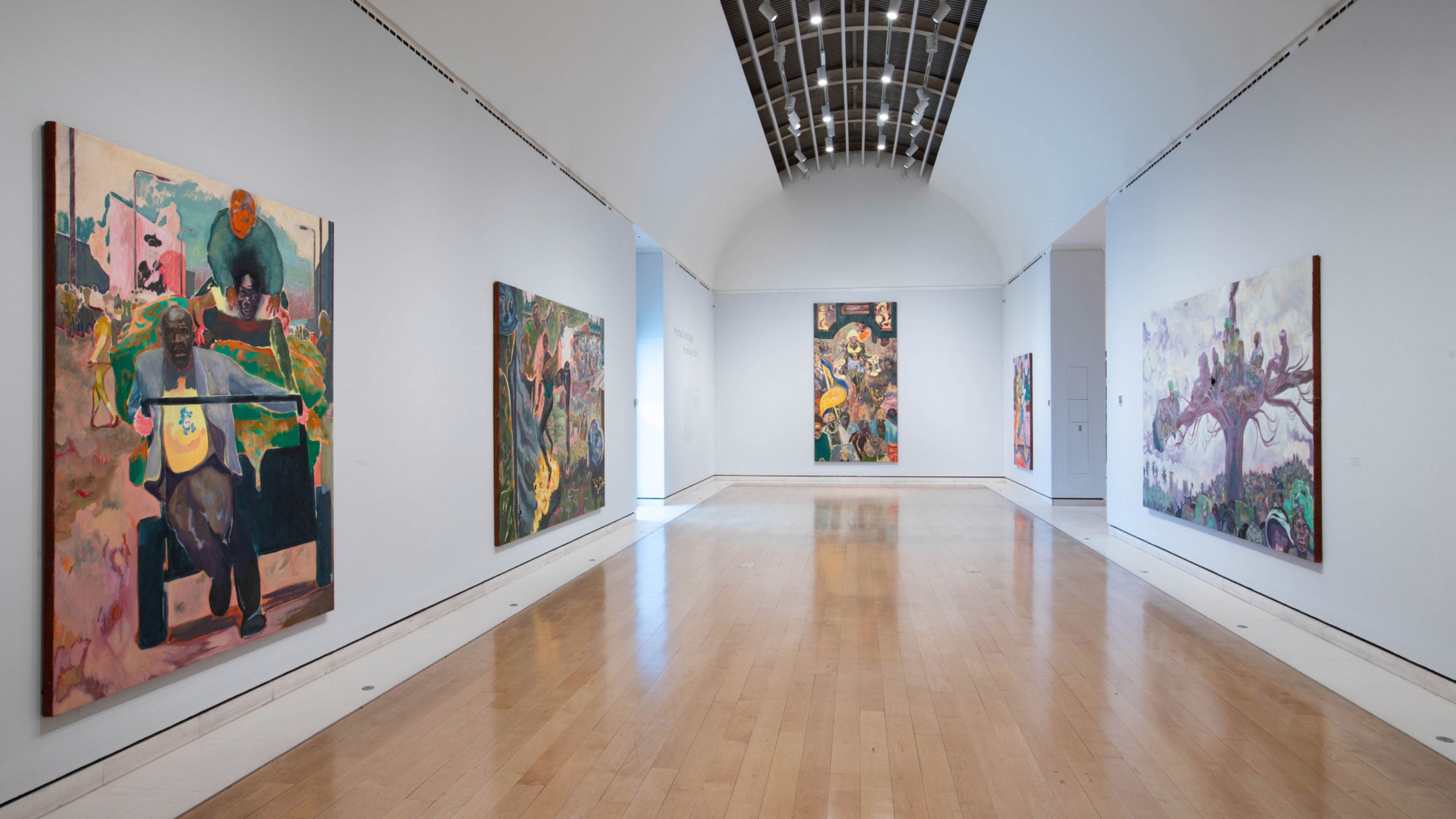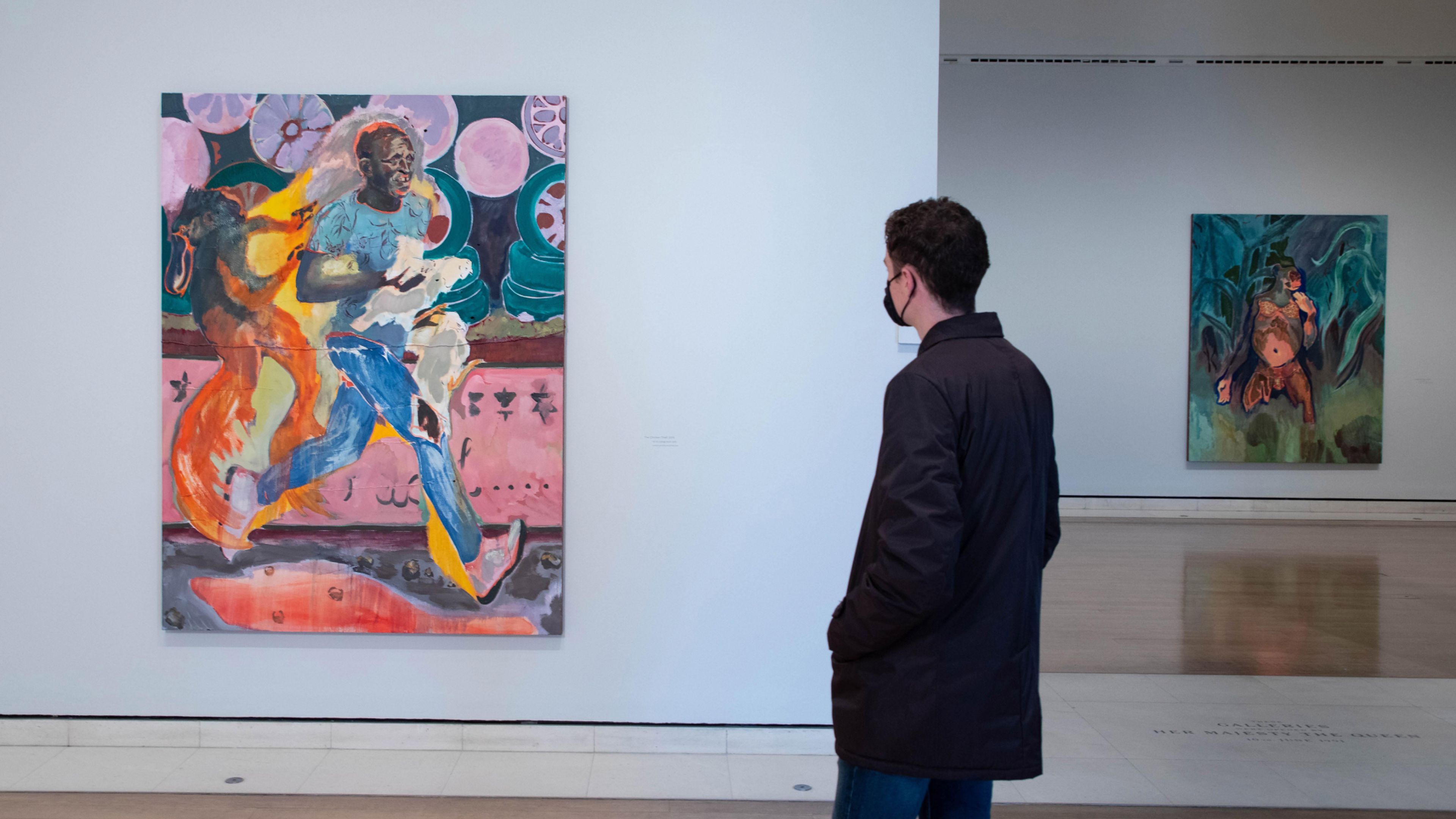Royal Academy of Arts, London
May 2021
May 22–September 19, 2021 This spring—just over ten years since Michael graduated from the Royal Academy Schools—the Royal Academy of Arts presents fifteen of the artist’s large-scale paintings from the past six years, exploring East African landscapes, politics and society. Titled Paradise Edict, alongside Armitage’s paintings will be a selection of thirty-one works by six East African contemporary artists: Meek Gichugu, Jak Katarikawe, Theresa Musoke, Asaph Ng’ethe Macua, Elimo Njau, and Sane Wadu. Chosen by Armitage for their important role in shaping figurative painting in Kenya, these seminal artists have also had a profound impact on his own artistic development. A version of this part of the exhibition will be shown at the Nairobi Contemporary Art Institute, a non-profit visual arts space founded by Armitage. Armitage has also selected works by three Kenyan artists—Wangechi Mutu, Magdalene Odundo and Chelenge van Rampelberg—that will be displayed in The Dame Jillian Sackler Sculpture Gallery, just outside the exhibition galleries. This display invites conversations between the three artists’ works and sculptures from the Royal Academy’s collection, which were curated by Richard Deacon RA. Armitage is a Kenyan-born artist who works between Nairobi and London. His colorful, dreamlike paintings are loaded with provocative perspectives that play with visual narratives and challenge cultural assumptions, exploring politics, history, civil unrest, and sexuality. Made using Lubugo bark cloth, a culturally important material made of tree bark by the Baganda people in Uganda, many of his large-scale works draw on contemporary events, combining these with Western painting motifs. The exhibition is organized by Haus der Kunst, Munich, in collaboration with the Royal Academy of Arts, London.



